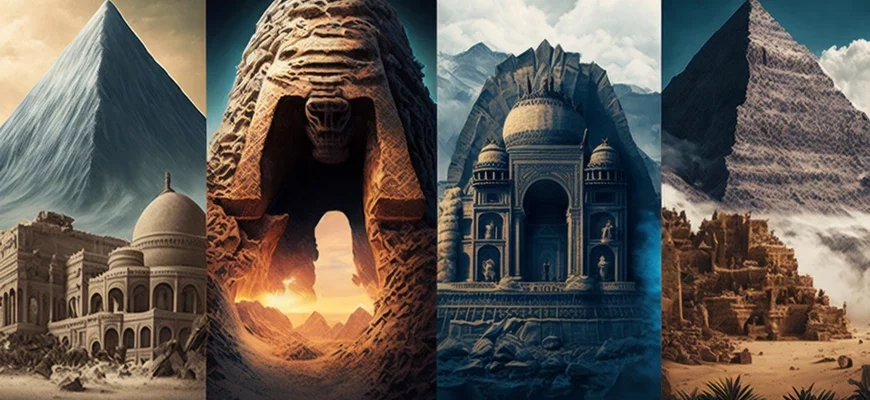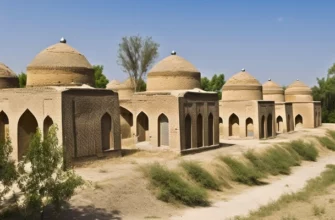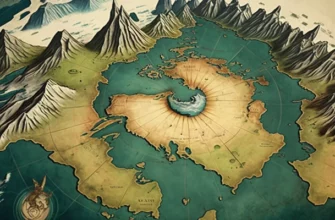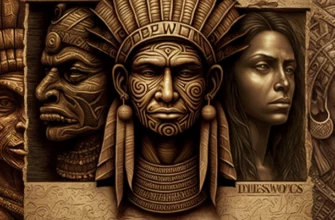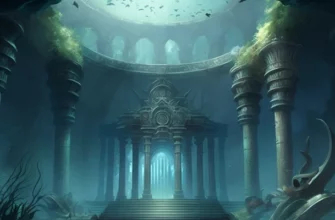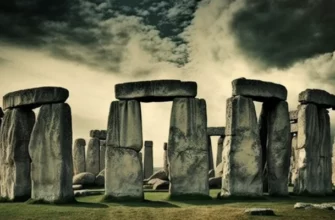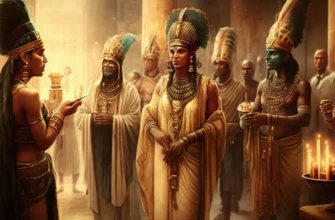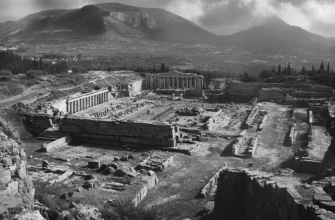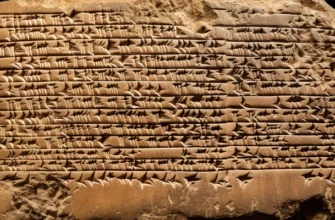The four great civilizations of the world are Ancient Egypt, Mesopotamia, India, and China. Each developed independently and has a unique culture, religion, and social organization. These civilizations became the cradle of world civilization and have had a profound influence on modern culture and society.
Ancient Egypt
Ancient Egypt is one of the oldest civilizations in the world, which developed on the banks of the Nile from the 4th millennium BC to the 3rd century AD. Egyptian civilization is known for its highly developed culture, art, architecture, and engineering achievements. Belief in the gods was central to Egyptian religion and culture. Egyptian society was divided into upper and lower classes, but social mobility was possible. Egypt’s influence on the modern world is evident in art, architecture, and culture in general.
Culture and religion
The culture and religion of Ancient Egypt were inextricably linked. Egyptian religion was polytheistic and based on the belief in many gods and goddesses. The chief god was Ra, the sun god. Egyptian art was used to convey religious ideas, depict the gods, and worship them. Egyptian culture is famous for its pyramids, sphinxes, temples, and other architectural masterpieces. The people of Ancient Egypt were creative and advanced, particularly in the fields of mathematics, medicine, and astronomy.
Social Organization
The social organization of Ancient Egypt was hierarchical and divided into classes: the pharaoh and his family, the high clergy, nobles and military leaders, artisans, and peasants. The pharaoh had unlimited power and acted as a god on earth. The high clergy had a significant influence on society and the economy. Peasants played an important role in providing food and resources for the country. Social mobility was possible, and certain individual achievements could help one rise in social status.
Mesopotamia
Mesopotamia is an ancient civilization that developed in the Tigris and Euphrates river valley in modern-day Iraq around 4000 BC. Mesopotamia is considered one of the most important cultural and civilizational areas in the world. It is known for its early achievements in agriculture, mathematics, writing, and architecture. This civilization was the first to use the wheel and establish cities. Mesopotamian religion was polytheistic, and the main god was Marduk. Mesopotamia’s influence on the modern world is evident in the use of the calendar, the system of weights and measures, and the development of architecture and the legal system.
Culture and religion
Mesopotamian culture was multi-layered and included art, literature, music, architecture, and other forms of art. The Mesopotamians developed their own writing system, cuneiform, which used clay tablets to record texts. They created a complex system of weights and measures, which helped in the development of trade.
Mesopotamian religion was polytheistic and included many gods and goddesses, each responsible for a specific aspect of life. For example, the goddess Ishtar was responsible for love and war, the god Anu for the sky, and Ea for water. At the heart of Mesopotamian religion were religious rituals and sacrifices, which took place in temples and shrines. The religious beliefs of the Mesopotamians greatly influenced subsequent religions such as Judaism, Christianity, and Islam.
Social organization
The social organization of Mesopotamia was divided into two classes: the ruling class and the subordinate class. The ruling class consisted of kings, priests, and high officials who had significant influence over power and wealth. The subordinate class consisted of peasants and artisans who were dependent on the ruling class.
Mesopotamian society was organized on the basis of city-states, which consisted of a central urban area and surrounding rural areas. Crafts, trade, and administrative structures developed in the cities, helping to ensure the stability and prosperity of the civilization. The social organization of Mesopotamia was an important factor in the development of its culture and economy, making it one of the most important ancient civilizations.
India
Ancient India was located in South Asia and covered the territories of modern India, Pakistan, and Bangladesh. Its culture and religion played an important role in shaping society and intellectual life.
Various religions developed in India, including Buddhism and Hinduism, which formed a complex philosophical and religious tradition. These religions led to the development of art and architecture, including huge buildings such as the Taj Mahal and the Great Buddha in Sarnath.
The social organization of India was based on a caste system. This system divided society into groups based on professional and family background. The caste system determined the lives of people in India for thousands of years and influenced their economic and social status.
Indian civilization had a significant impact on the development of scientific and mathematical knowledge. Indian scientists created important mathematical concepts and methods, including the decimal system and algebra. India was also a center of art, literature, and music, making it one of the most influential cultures in the world.
Culture and religion
The culture and religion of ancient India played an important role in shaping civilization. The rich traditional culture included art, literature, and architecture, such as the Taj Mahal and the Great Buddha at Sarnath.
Ancient India had a complex and multifaceted religious tradition. Buddhism and Hinduism were the most common religions. Hinduism, which became the official religion of India, played an important role in shaping Indian culture and philosophy.
In India, religion was connected to all aspects of life, including culture and social organization. Religious rituals and festivals were an important part of Indian life. Various arts, such as dance and music, also developed in India and were associated with religious rituals and festivals.
Indian culture and religion also had a significant influence on neighboring countries and cultures. They were a source of inspiration for religions such as Buddhism and Jainism, as well as for art and architecture, which spread to other parts of the world.
Social Organization
The social organization of ancient India was divided into a caste system that determined a person’s status and role in society. This system consisted of four main castes: Brahmins, Kshatriyas, Vaishyas, and Shudras.
The Brahmins were the sacred and spiritual leaders of society. The Kshatriyas were warriors and rulers. The Vaishyas were engaged in trade and crafts, and the Shudras mostly performed manual labor.
The caste system not only determined a person’s role and status, but also limited their social and economic opportunities. Over time, the caste system became less strict, but its influence on Indian society remained significant.
Outside the caste system were people called “pariahs” or “untouchables.” These people did the lowest and least prestigious jobs in society and had very limited opportunities for education and career advancement.
Ancient India also had a family-based organization, where the family was the center of society. Traditionally, women played the role of housewives and child-rearers, while men were responsible for earning a living and providing for the family’s material needs.
China
Ancient China is an ancient Chinese civilization that originated more than 5,000 years ago in what is now China. This civilization is characterized by a rich cultural heritage and innovative technologies.
The culture and religion of ancient China were very diverse and complex. One of the main religions was Confucian philosophy, which played a major role in shaping the moral and ethical standards of Chinese society.
The social organization of ancient China was divided into a caste system that reflected a person’s status and role in society. This system consisted of the emperor, the nobility, ordinary citizens, and slaves.
In ancient China, family education and traditions were well developed, which was the basis for the formation of cultural, moral, and ethical values. Particular attention was paid to respecting elders and worshipping ancestors.
Another important element of social organization was public duties, which every citizen had to perform according to their status. For example, the best representatives of the caste served in the state administration, fought to defend the state, and studied science.
Culture and religion
The culture and religion of ancient China were very diverse and rich. One of the most famous religions was Confucian philosophy, which played a major role in shaping the moral and ethical standards of Chinese society. Buddhism and Taoism were also widespread in ancient China.
Chinese culture is known for its diversity and richness. One of the most famous elements of Chinese culture is the art of calligraphy, which combines graphics, symbolism, and aesthetics. Other significant elements of Chinese culture include ceramics, folk dance and music, architecture, traditional medicine, and cuisine.
One of the main features of Chinese culture is the great attention paid to observing traditions and rituals. China has many holidays and traditions associated with rituals dedicated to gods, ancestors, and nature.
Language is also an important element of Chinese culture. The Chinese language is one of the oldest languages in the world and is of great importance as a cultural element. Ancient China also made a significant contribution to the development of science, particularly mathematics, astronomy, medicine, and other scientific fields.
Social organization
Ancient China had a complex social structure based on hierarchy. It included the emperor, the nobility, wealthy merchants, artisans, farmers, and slaves. The emperor was considered the son of heaven and had unlimited power. The noble aristocracy had enormous wealth, but they had a duty to serve the emperor. Society was quite conservative, and each social group had its own traditions and customs. To support the hierarchy of power, various restrictions were imposed on the population, such as prohibiting artisans and merchants from holding high office.
Results and comparisons
The four great civilizations of the world—Ancient Egypt, Mesopotamia, Ancient India, and Ancient China—were very influential and left a significant mark on world history. Each civilization had its own unique cultures, religions, and social organizations.
However, they all had some common features. For example, all four civilizations developed along rivers – the Nile, Euphrates and Tigris, Ganges and Yangtze, respectively. They all had developed agrarian cultures and economies, and were also engaged in trade and craftsmanship.
Each civilization also developed its own writing system, which made it possible to preserve many historical facts and events. All four civilizations had complex social structures with hierarchies, but they were different in nature.
One of the main differences between these civilizations was religion. Although they had their own deities, concepts, and rituals, they also had common features. For example, all civilizations had priests who occupied an important place in society and maintained a common cultural connection.
Compared to other civilizations of the time, these four are considered the most advanced, having made significant contributions to science, mathematics, art, and other fields.
One of the most significant features of the four civilizations is their high level of scientific and technological development, which contributed to significant progress in architecture, mathematics, medicine, and other fields of knowledge. All four civilizations had complex social structures with unique forms of government and hierarchy. Each also had its own religion and culture, which greatly influenced their way of life and thinking.
However, there were significant differences among the civilizations in their approaches to governance, economics, and social issues. For example, in Ancient Egypt, power was quite centralized, while in Mesopotamia and Ancient India, there were more diverse forms of government and more developed craft and trade activities. Ancient China, on the other hand, had its own system of government and hierarchy, which had a significant impact on the life of society.
Thus, the four great civilizations of the world have had a significant impact on world culture and history. Despite their differences, they have jointly made a significant contribution to the development of humanity and the formation of the modern world.
